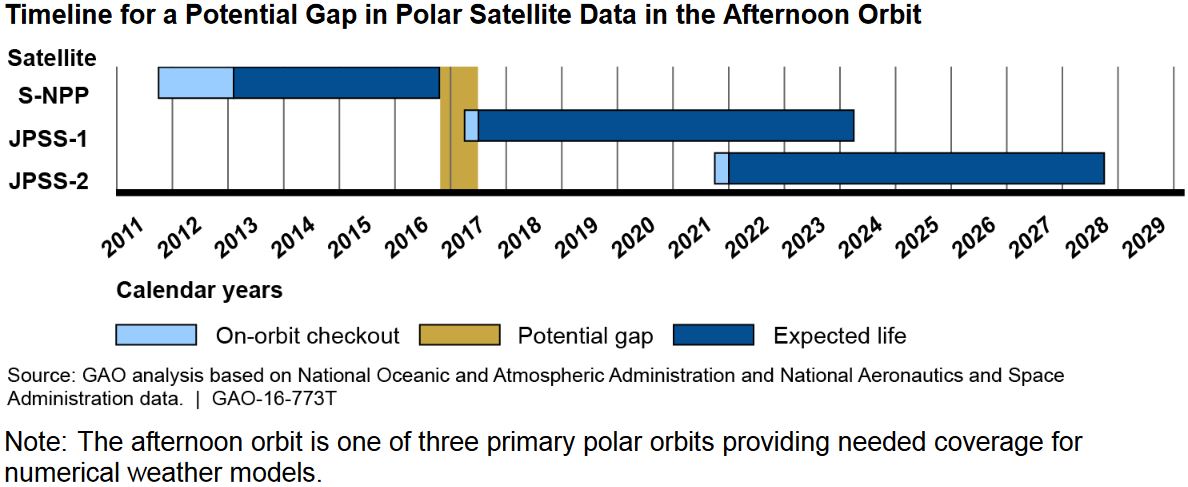Eyes in the Sky | Could We Be Headed for Less Accurate Weather Forecasts?
Satellites are critical for timely forecasts and warnings of extreme weather events. But, as we’ve discussed before, some of these satellites are aging and should be replaced.
The National Oceanic and Atmospheric Administration oversees key weather satellites, and today we’re looking at what NOAA has been doing to make sure the nation is ready for this hurricane season—and the many to follow.
Preparing for storms
NOAA is currently building a new generation of polar weather satellites that should be much better at predicting the weather.
However, while the next polar satellite is close to completion, it has encountered some problems that could delay its launch. If the current satellite fails before the next one is operational, there could be a gap in available satellite data—and any gap means less accurate weather forecasts.
How long might a gap last?
The length of a potential gap in satellite data is based on 2 factors:
- how long a current satellite will last, and
- when a replacement satellite will be ready.
Recently, we reported that NOAA could face an 8-month data gap. A current polar satellite has problems with a key instrument, for instance, that could shorten its service life. At the same time, a series of problems with a replacement satellite—as well as the supporting ground systems—may delay that satellite’s launch.

(Excerpted from GAO-16-773T)
Speeding production
Over the next 2 decades, NOAA plans to launch 4 new satellites. All of these satellites are part of a similar series, and building similar or identical satellites means NOAA can build more satellites faster.
While these new satellites are welcome insurance against satellite failure, NOAA has not yet shown that its planning for these future satellites considers improvements in how long satellites will last, or the cost of storing satellites.
How secure is satellite data?
We have also raised concerns about the security of weather satellite data. While NOAA’s upcoming ground-based satellite communication system upgrade is designed to be far more secure than its current system, there are still a lot of issues with both the current and future systems.
For example, the polar satellite program has already experienced a series of security incidents, such as hostile probes, unauthorized access, and password sharing. In fact, we found more than 1,400 vulnerabilities in the current and planned IT ground systems supporting the satellites.
But NOAA has not yet fully implemented important security safeguards, leaving this system at high risk of compromise.
For more information on NOAA’s satellite programs and potential gaps, check out our report and testimony for the House Science, Space, and Technology Committee’s Subcommittee on Environment.
- Comments on GAO’s WatchBlog? Contact blog@gao.gov.
GAO Contacts
Related Products

GAO's mission is to provide Congress with fact-based, nonpartisan information that can help improve federal government performance and ensure accountability for the benefit of the American people. GAO launched its WatchBlog in January, 2014, as part of its continuing effort to reach its audiences—Congress and the American people—where they are currently looking for information.
The blog format allows GAO to provide a little more context about its work than it can offer on its other social media platforms. Posts will tie GAO work to current events and the news; show how GAO’s work is affecting agencies or legislation; highlight reports, testimonies, and issue areas where GAO does work; and provide information about GAO itself, among other things.
Please send any feedback on GAO's WatchBlog to blog@gao.gov.




